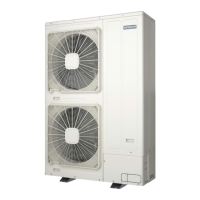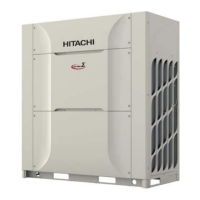8 Refrigerant and water piping
General notes before performing piping work
TCGB0123 rev.2 - 10/2019
96
8.1 General notes before performing piping work
8.1.1 Piping work
• Prepare locally-supplied copper pipes.
• Select the piping size with the correct thickness and correct material able to withstand sufcient pressure.
• Select clean copper pipes. Make sure that there is no dust or moisture inside the pipes. Blow the inside of the pipes
with oxygen free nitrogen to remove any dust and foreign materials before connecting them.
? NOTE
A system with no moisture or oil contamination will give maximum performance and lifecycle compared to that of a poorly prepared
system. Take particular care to ensure that all copper piping is clean and dry internally.
• Cap the end of the pipe when pipe is to be inserted through a wall hole.
• Do not put pipes on the ground directly without a cap or vinyl tape at the end of the pipe.
• If piping installation is not completed until next day or over a longer period of time, braze off the ends of the piping
and charge with oxygen free nitrogen through a Schrader valve type access tting to prevent moisture and particle
contamination.
• It is advisable to insulate the water pipes, joints and connections in order to avoid heat loss and dew condensation on
the surface of the pipes or accidental injures due to excessive heat on piping surfaces.
• Do not use insulation material that contains NH
3
, as it can damage copper pipe material and become a source of
future leakage.
• It is recommended to use exible joints for the water piping inlet and outlet in order to avoid vibration transmission.
• Refrigerant circuit and Water circuit must be performed and inspected by a licensed technician and must comply with
all relevant European and national regulations.
• Proper water pipe inspection should be performed after piping work to assure there is no water leakage in the space
heating or DHW circuits.
8.1.2 Suspension of refrigerant and water pipes
• Suspend the refrigerant and water piping at certain points and prevent the refrigerant and water piping from being
in direct contact with the building: walls, ceilings, etc.. If there is direct contact between pipes, abnormal sound may
occur due to the vibration of the piping. Pay special attention in cases of short piping lengths.
Fire-proof
section
treatment
1~15m
Indoor unit
• Do not x the refrigerant and water pipes directly with the metal ttings (refrigerant piping may expand and contract).
Some examples for suspension method are shown below.
For suspending
heavies
For piping
along the wall
For instant
installation work

